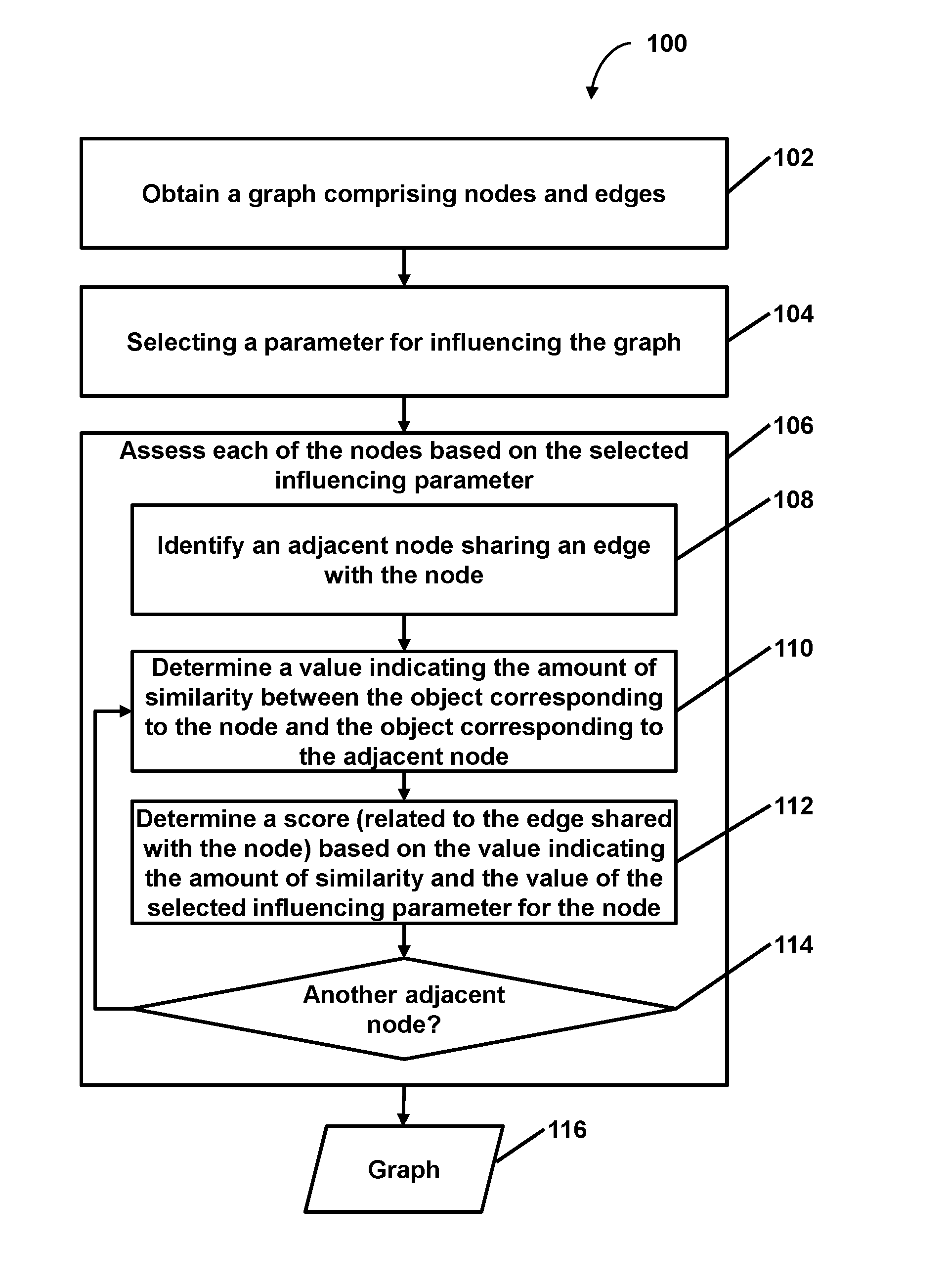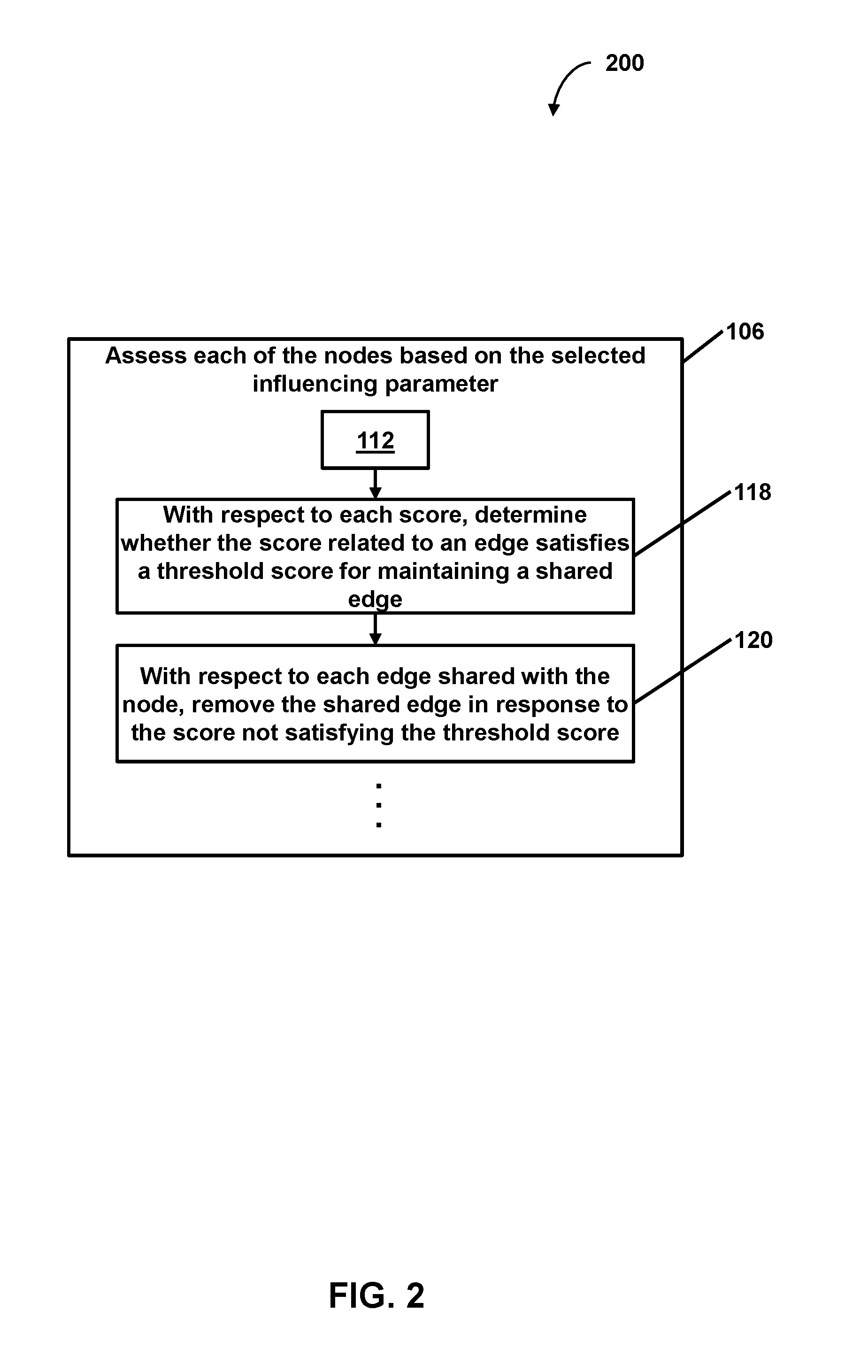Facilitating targeted analysis via graph generation based on an influencing parameter
a graph and parameter technology, applied in the field of computational analyses, can solve the problems of affecting the representation of objects in the collection of documents, affecting the explanatory power of the graph, and achieving inferences that would otherwise be impractical,
- Summary
- Abstract
- Description
- Claims
- Application Information
AI Technical Summary
Benefits of technology
Problems solved by technology
Method used
Image
Examples
embodiment 1
2. The method of embodiment 1, wherein assessing the number of edges comprises, with respect to each of the nodes of the graph that is an adjacent node candidate of the evaluation node: determining a value indicating an amount of similarity between the object corresponding to the evaluation node and the object corresponding to the adjacent node candidate; determining a score related to the adjacent node candidate, the score determined based on the value indicating the amount of similarity and the value of the selected influencing parameter for the evaluation node; determining whether the score satisfies the threshold score for maintaining a shared edge; and adding an edge linking the evaluation node and the adjacent node candidate based on the score satisfying the threshold score such that the adjacent node candidate is an adjacent node that shares the added edge with the evaluation node.
3. The method of embodiments 1-2, wherein, with respect to each evaluation node among the nodes ...
embodiment 3
4. The method of embodiment 3, wherein selecting the one or more nodes based on the extracted entity comprises: accessing an index of topics of documents to identify the one or more nodes as nodes that correspond to at least one document about the entity.
5. The method of embodiments 1-4, wherein: the graph comprises a weighted semantic graph of semantic similarity between unstructured text in documents within an analyzed corpus; weights of the semantic graph are inferred by unsupervised learning of the weights by one or more computers; and each of the nodes of the graph correspond to at least one respective document within the analyzed corpus.
embodiment 5
6. The method of embodiment 5, wherein determining the value indicating the amount of similarity between the object corresponding to the evaluation node and the object corresponding to the adjacent node comprises: obtaining a first vector corresponding to the document that corresponds to the evaluation node and a second vector corresponding to the document that corresponds to the adjacent node; determining similarity between the first vector and the second vector; and determining the value indicating the amount of similarity between the document corresponding to the evaluation node and the document corresponding to the adjacent node based on the similarity between the first vector and the second vector.
7. The method of embodiment 5, wherein, with respect to the evaluation node and each adjacent node in the graph sharing an edge with the evaluation node: an n-gram representation of the document corresponding to the evaluation node is obtained and encoded as at least part of a first n...
PUM
 Login to View More
Login to View More Abstract
Description
Claims
Application Information
 Login to View More
Login to View More - R&D
- Intellectual Property
- Life Sciences
- Materials
- Tech Scout
- Unparalleled Data Quality
- Higher Quality Content
- 60% Fewer Hallucinations
Browse by: Latest US Patents, China's latest patents, Technical Efficacy Thesaurus, Application Domain, Technology Topic, Popular Technical Reports.
© 2025 PatSnap. All rights reserved.Legal|Privacy policy|Modern Slavery Act Transparency Statement|Sitemap|About US| Contact US: help@patsnap.com



